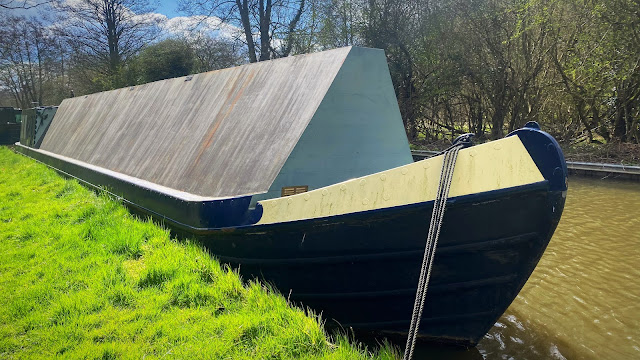Canal fishing has always been a means to an end for me because lets be honest, flowing waters is where ones allegiances lie and every countdown to the closed season, the chin scratching starts and I'm wondering what the heck I'm going to fish for.
I'm not a huge fan of still waters either as I'm not one for sitting for any length of time and ok, I could maybe lure fish some bigger lakes or floater fishing for carp that sort of thing, but the reality is, they are just not for me.
Obviously the Canal Zander Quest that took me 6 years to complete really was a welcome distraction when the rivers are out of bounds, but the capture of the 11lb 8ounce monster really did come out of the blue and that chapter in ones fishing was closed with a rather loud thud.
Walking the towpaths you get to see not only nice countryside which is a nice distraction from looking down to avoid the dog landmines but from time to time flowing water fishing spots are stumbled upon and the other day an explore of an adjacent gin clear brook really did look good for a trout bite.
Now I've caught plenty of brown trout in Warwickshire but not on a dry fly and it got me thinking about dusting off my Tenkra rod and rigging it up properly with a fly set-up and remove the tiny float that I used to catch 'ickle fishes'
The fly reel is a relatively modern invention, and it offers a significant advantage - holding extra line so a fisherman can make long casts and a hooked fish can make long runs. With every advance, though, something gets left behind.
In fly fishing, what got left behind was the ability to get drag-free drifts in tricky currents by keeping a light line off the water's surface. Also, the direct connection between the angler and the fish was lost when fish started pulling against the drag instead of the rod. In Japan, Tenkara has been used for hundreds of years to fish in small, high gradient mountain streams. For small mountain streams, it really is an ideal way to fish.
You don't make long casts and the fish don't make long runs, so you don't need a reel. There are cross currents everywhere and the long rod and light line make it much easier to get a drag-free drift or to keep a fly in an eddy. Because the line is off the water's surface, there is no need to mend. There is no excess fly line to get caught underfoot or get tangled in sticks and snags.
That lack of excess line to manage makes this the easiest way for a beginner to learn fly fishing. It is really pretty intuitive and a complete beginner can pick it up without having to take casting lessons.
In Tenkara fishing, the whole emphasis is on the fishing rather than the fly choice, on presentation rather than imitation. Matching the hatch is not emphasized. Interestingly, in Europe, which has an even longer tradition of fishing with a long rod and line tied to the rod tip, flies have been tied to match specific insects for almost 2000 years.
So anyway a quick search on Ebay I purchased some green Drake Fanwing mayfly dry flies, mainly because they looked good and were, well cheap !!! I also had some bread flake imitation flies I bought ages ago which were far smaller than I thought when they turned up, but I'm sure they would certainly attract a trout.
I had to buy a yellow fluorocarbon level leader as well before adding the clear fluorocarbon leader which I already had. Tenkara is in essence all about the ability of keeping a line off the water and making the fly behave like a fly and the level line is by far the best way of doing this.
Fluorocarbon lines tend to be invisible and trying to cast an invisible line can be a nightmare! so this yellow line looked ideal to at least see where the heck the fly was likely to be.
Now this was a reccy mission but it would be rude not to cast a fly but when I got to the waterway not only was it gin clear as expected but it looked like someone had removed the plughole. Probably a month early I know but put the work in now it might help when the trout are looking skyward.
It is surprising just how these brooks can change in appearance and flow in such a short distance. Often it is when there is a feeder stream helps boost levels and static swims can change to flowing ones in a hop skip and a jump.
A couple of the swims were a couple of foot deep but oddly were fishless and apart from seeing a couple of small trout (3 inches) that shot out from their lair when I approached there was nothing doing at all.
A schoolboy error fishing in bright sunshine and before the hatch but still it ticked a few boxed and fishing is all about learning.
Now this little brook takes a completely different appearance with a bit of water on and that's when I'll give it another go and maybe I'll wait to till warms up a bit and the insects make an appearance. A blank, still, despite the cold weather the sun was pleasant and the Fitbit happy.










Magic Mick. I love small streams.
ReplyDeleteScarlett elf caps, pretty rare round these parts. Very localised.
Yeap something different, glad I'm not in the minority !!
Delete